We first visited Antarctica aboard the National Geographic Endurance in late 2022 and loved the raw beauty of the snow-covered wilderness, with fantastically-shaped icebergs and rugged mountains soaring upwards from land and sea. The wildlife was exceptional as well, but it was the scenery that really drew us in. We knew we’d be back, but couldn’t have guessed that our next trip to the continent would be spent entirely on land, and would include standing at the geographic South Pole.
A year after our trip on the Endurance, we made our second visit to Antarctica, this time staying for a week at White Desert’s Echo Camp. The modern, luxury facility was launched in December of 2022, augmenting the company’s other two camps, Wolf’s Fang, that opened in 2021 and their flagship camp, Whichaway, operating since 2012. The camps, each supporting a maximum of 12 guests, are considered the first and only hotels in Antarctica. White Desert offers a number of excursion and activities depending on the camp and the time of year, but the real draw for us was the opportunity to visit the South Pole.
Guests arrive from Cape Town aboard a chartered Gulfstream G550 or, more recently, an Airbus A340, landing on an ice runway. Portuguese charter company HiFly made headlines in 2021 when they were the first to land an A340 in Antarctica. All flights to, from and within Antarctica are weather-dependent, so exact departure times aren’t known until close to flight time. But flights to the continent likely will depart very early in the morning from Cape Town—ours left at 1am—to ensure an optimally cold runway temperature of 21.2°F (-6°C) on arrival. The video below shows the A340 landing on the ice runway in Antarctica just prior to our departure back to Cape Town at the end of our stay.
The Airbus A340-300 we flew on was built in 1997 for Singapore Airlines and most recently owned by Emirates, with their signature gold trim and woodwork retained. Echo guests sat in the 12-seat first class section, while Whichaway and Wolf’s Fang guests sat in business class. As required, our carry-on kit included the cold-weather gear that we would need when we disembarked in Antarctica. We boarded wearing the warm-weather clothing appropriate for the 84°F (29°C) temperatures in Cape Town and, an hour before landing, changed into our polar gear after the cabin temperature was turned down. We got some great views to the continent as we neared the runway.
White Desert operates the only private runway in Antarctica, Wolf’s Fang, at 71° 31′ S, 08° 48′ E. This also is the location of their adventure camp Wolf’s Fang. The temperature was 16.9°F (-8.3°C) when we landed around 6am, but we were warm and comfortable on our cold-weather gear. After spending some time enjoying the experience of actually being in Antarctica, and taking in the scene, we were transported by truck to Echo Camp, about 15 minutes away.
Echo Camp is a sleek and futuristic facility sitting on a glacier beneath between dramatic nunataks (peaks that project from inland snow or ice). Guests stay in one of six individual “Sky Pods” designed to emulate space station interiors, with floor-to-ceiling one-way windows that provide a fabulous view to the Antarctic scenery. Particularly striking was the view to the Drygalski Mountains and the dramatic Ulvetanna Peak (Norwegian for Wolf’s Fang), the namesake of the runway and its camp. The Echo pod windows can be covered with magnetically-attached pads that also provide heat insulation and privacy, but we were sufficiently warm with the pod’s heater and preferred the view, despite the 24-hour daylight. During the day, we often had to turn off the heat and open the door as the pod actually became too warm in the sunlight.
The pods have no plumbing, partly due freezing risk, but also because of water restrictions. The camp has no freshwater supply and must melt snow make any water. Instead of running water, a dressing area in the pod includes a vanity with a sink and a thermos of water, topped up daily. And a small adjacent bathroom includes an innovative DryFlush toilet that vacuum-seals solid waste, eliminating any odor or mess.
The communal shared camp area is made up of multiple connected pods, with a lounge and library, both floor-to-ceiling windows, a dining room and an adjoining kitchen. The staff sleep in polar tents pitched behind the shared camp area. The pods are all temporary, and the entire camp can be completely disassembled and removed.
We loved spending time in the sun-filled lounge, where our group often congregated for briefings, hors d’oeuvres and drinks.
The connected pods also include the decontamination chamber: two shower stalls each equipped with floor-to-ceiling one-way windows. The guests all seemed to operate on different schedules, and we had no trouble taking a shower when we wanted one.
Echo Camp has a chef on-site who prepared food daily of excellent quality. Meals were served communally in the dining room, and we very much enjoyed the conversation with the other guests. White Desert also arranged a couple of special meals: build-your-own pizzas cooked in a portable propane oven at a Bedouin tent on a high plateau, and a polar explorer-themed dinner after returning from the South Pole.
One notable feature, for us, that was unavailable at Echo was internet connectivity. White Desert had just installed a Starlink system at Wolf’s Fang when we visited, but no internet was yet available at Echo. James needs to be connected for work, so we brought our Starlink satellite dish with us.
Prior to departing Seattle, we switched to a Maritime plan, required for Antarctica, and packed our Starlink system into our luggage with the rest of our gear. (We put first put all the parts into a Boundary 35 Dry Pack that we use for transporting the system in our truck.)
We were expecting we might have to setup the dish outside our pod to get a clear view to the sky, but it worked well inside at the window. Connecting took a little longer than normal and we saw frequent brief outages, but overall the system worked very well and supplied steady, high-speed connectivity the entire week.
During our week at Echo camp, we made two major excursions: a day trip to an Emperor Penguin colony and an overnight trip to the South Pole. We’ll cover these in detail in a subsequent blog. The rest of our time we took part in a number of activities, including ice climbing, abseiling, hiking to the summit of several nearby nunataks, ziplining, and exploring a glacial crevasse. We enjoyed these activities so much, particularly those requiring crampons, that we’re looking into repeating them elsewhere.
We also spent time at Wolf Fang’s camp in their fabulous multi-room ice bar, complete with electricity and several tabletop games.
And throughout it all, we marveled at the spectacular Antarctic scenery in the ever-changing light. On our previous Antarctica trip by boat, we spent the majority of our time on or near the water at sea level. Echo is 120 miles (193 km) inland and sits at 3,900ft (1,182m) above sea level. We only saw the ocean or any icebergs on arrival, departure and the Emperor Penguin trip. The camp is so remote and the environment so different from anything we’re used to that it really felt like we were on another planet, or at the very least atop some remote high-altitude mountain. It was easy to imagine how the early polar explorers felt, facing such a barren and formidable expanse of mountains, snow, and glaciers. We felt privileged to see this inland part of the continent that so few are able to experience.
Our routes around Echo Camp are shown on the interactive map below. Click here for a full-page map.
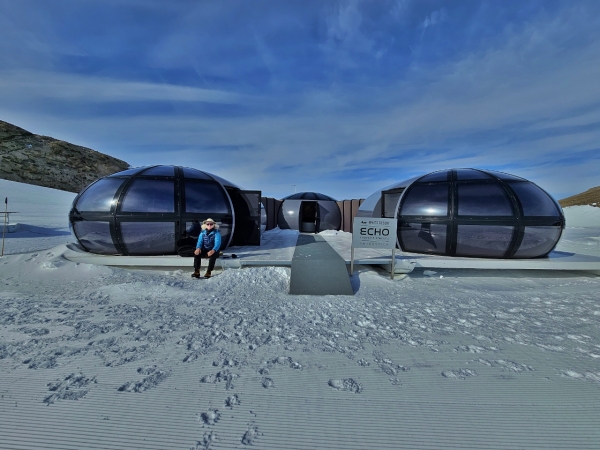
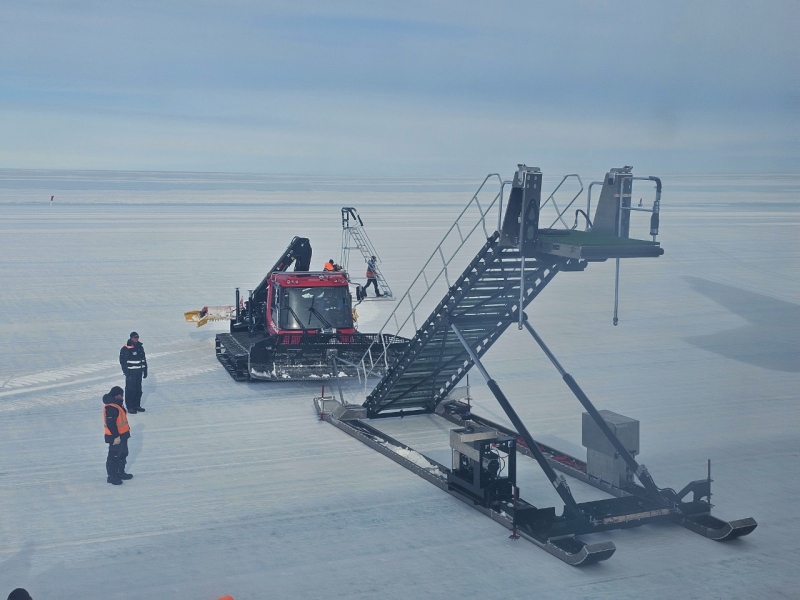

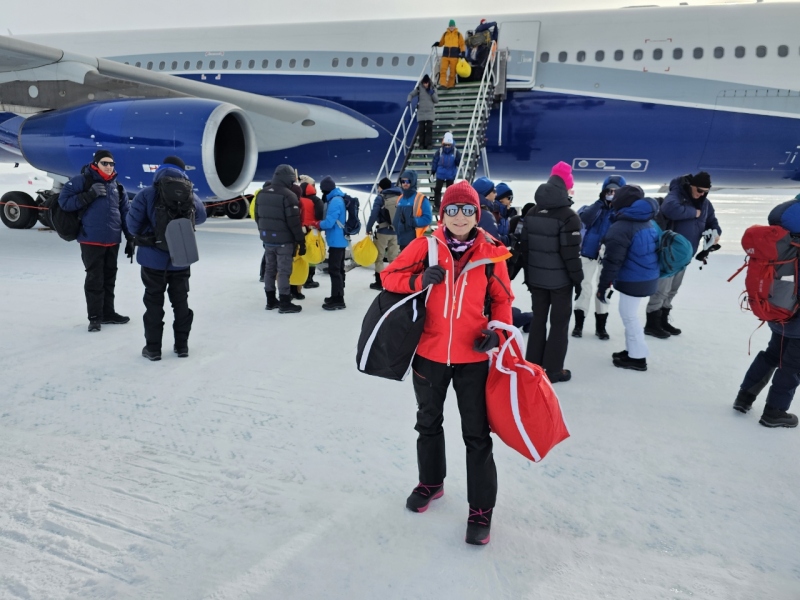
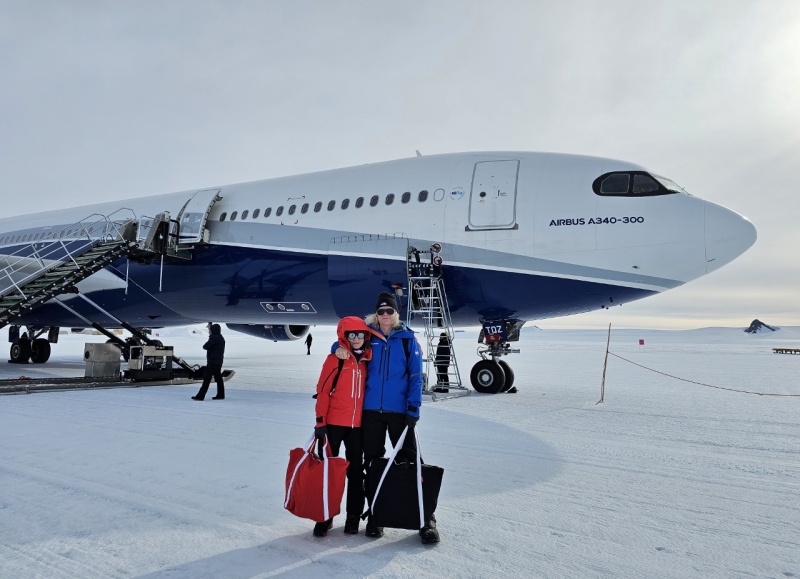
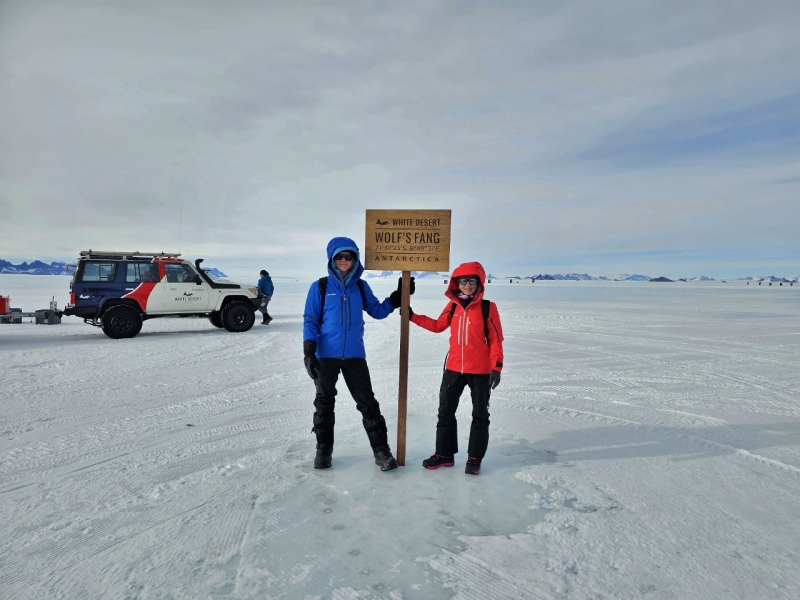
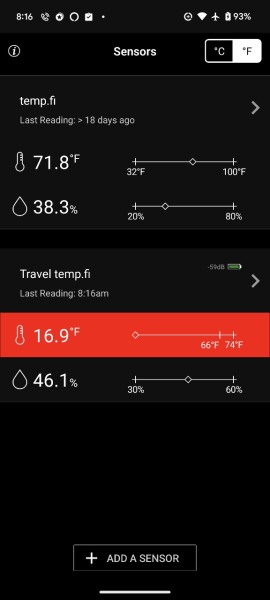
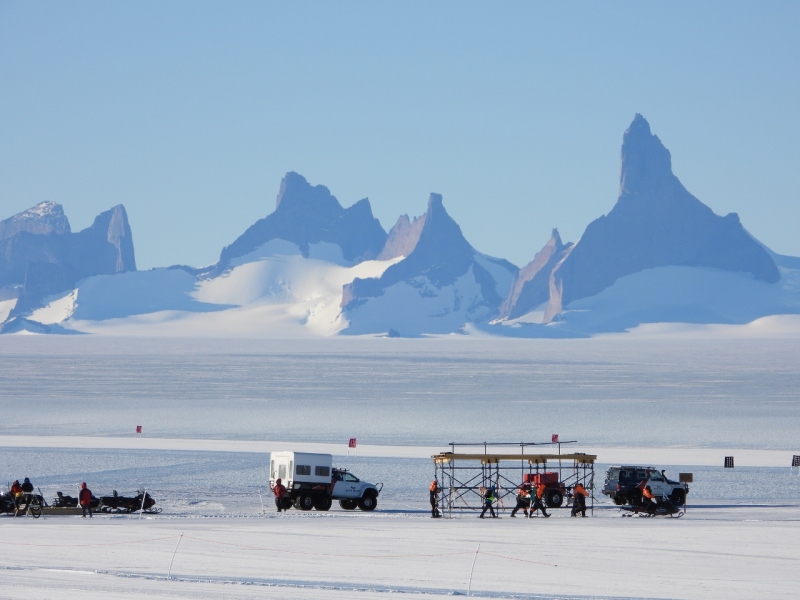
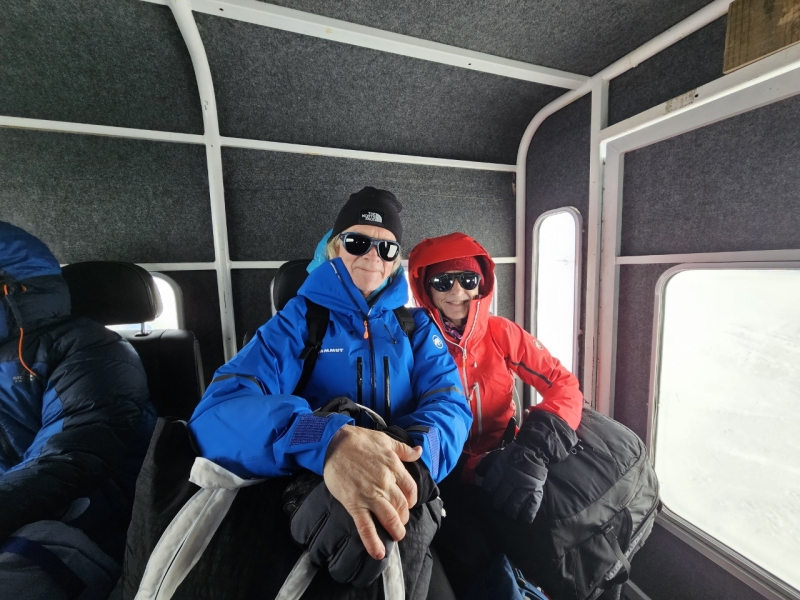
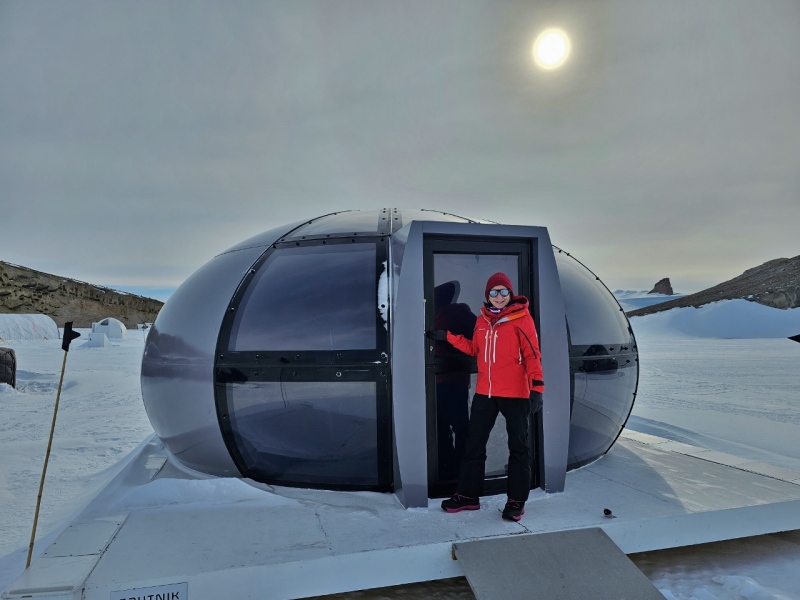
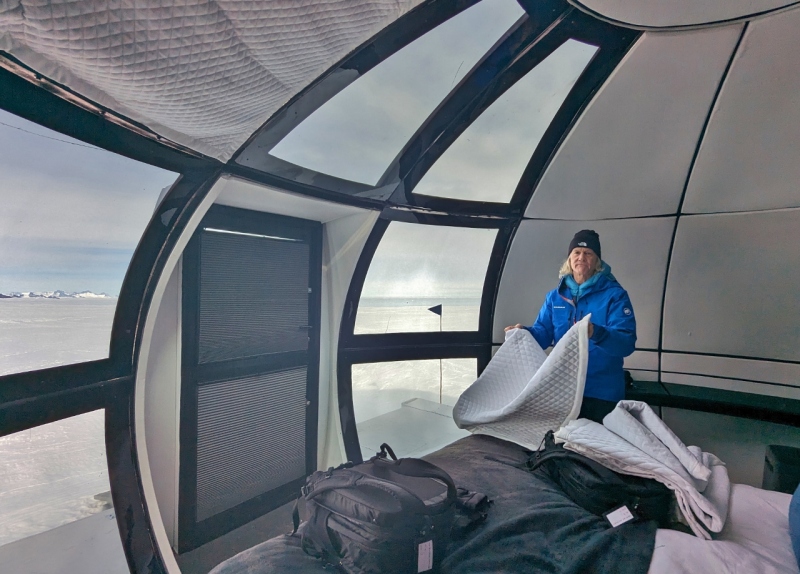
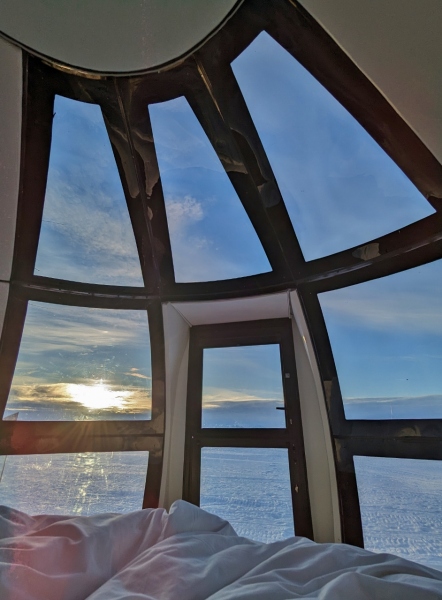
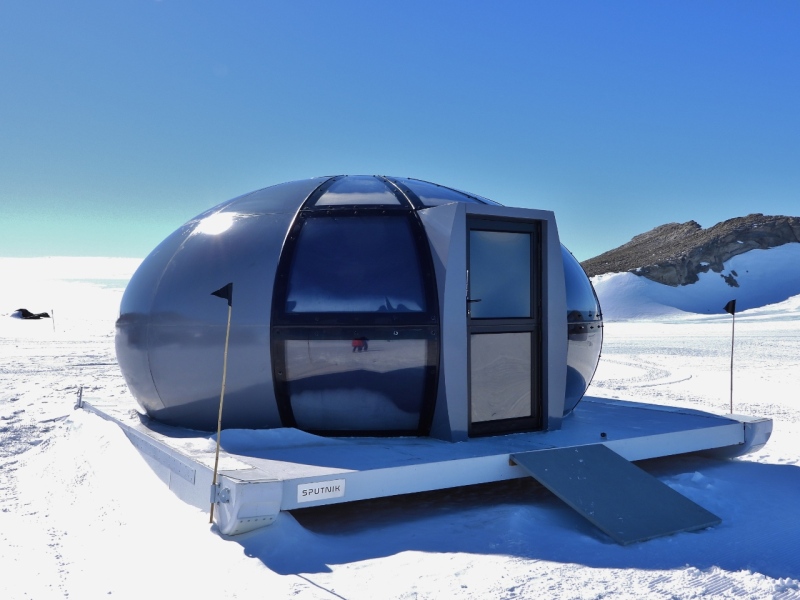
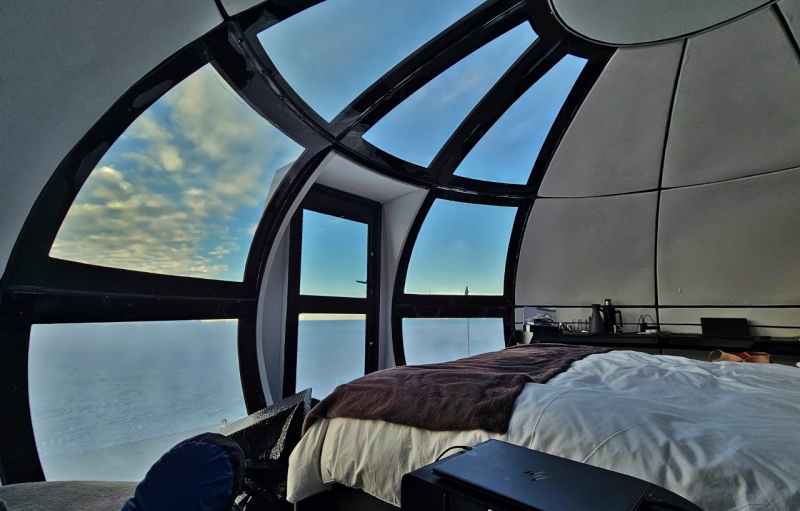
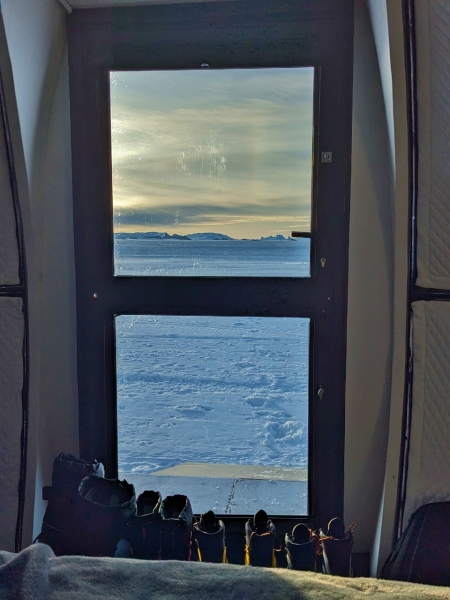
Amazing, fantastic trip! I think your next purchase will be an ice-class yacht)))
It was an amazing trip and I hope you are right in thinking we have an ice class yacht in our future. That sounds like fun!
Looks like a wonderful adventure, thanks for sharing! Just curious, are there any customs/immigration formalities when entering Antarctica or returning to Cape Town? Flying into Antarctica is pretty unusual for non-scientists!
Good question Sam. There are no formalities entering or exiting Antarctica. Entry to South Africa is controlled whether from another country or Antarctica so, returning to South Africa requires them standard clearing in procedures.